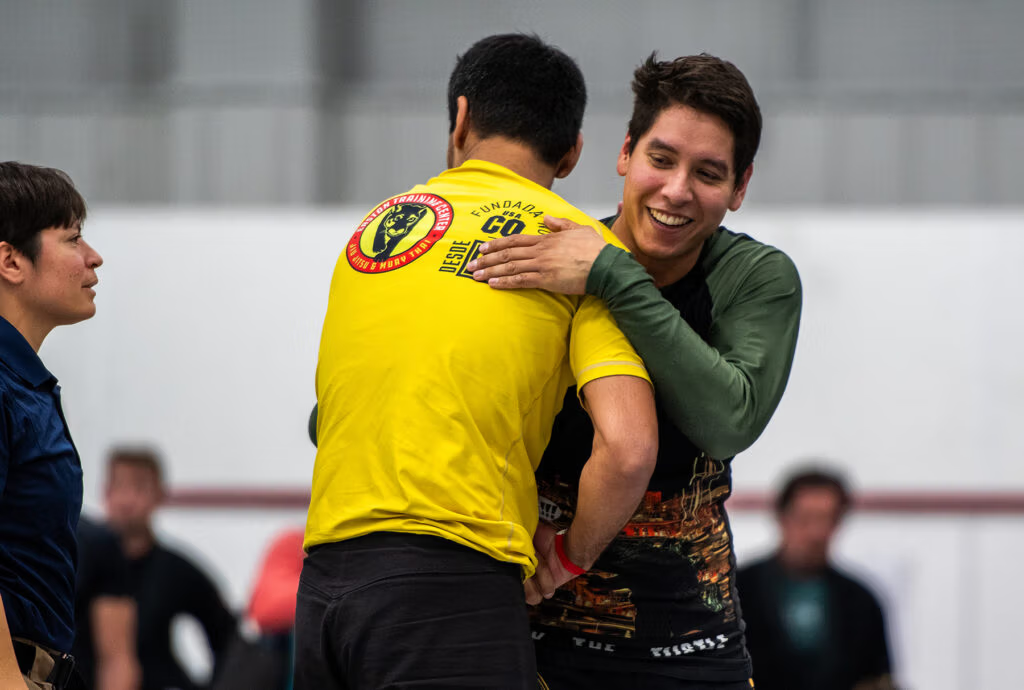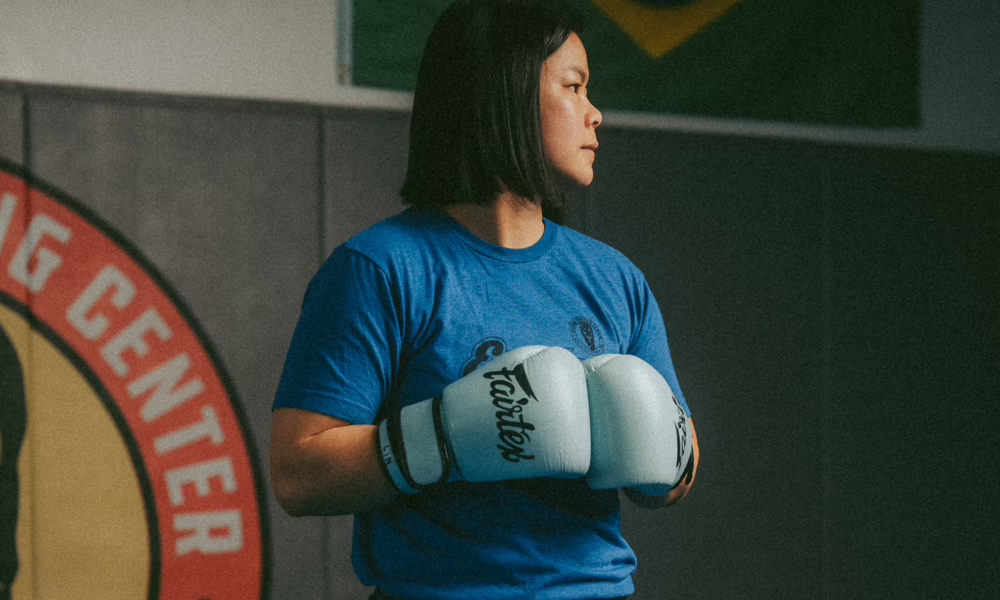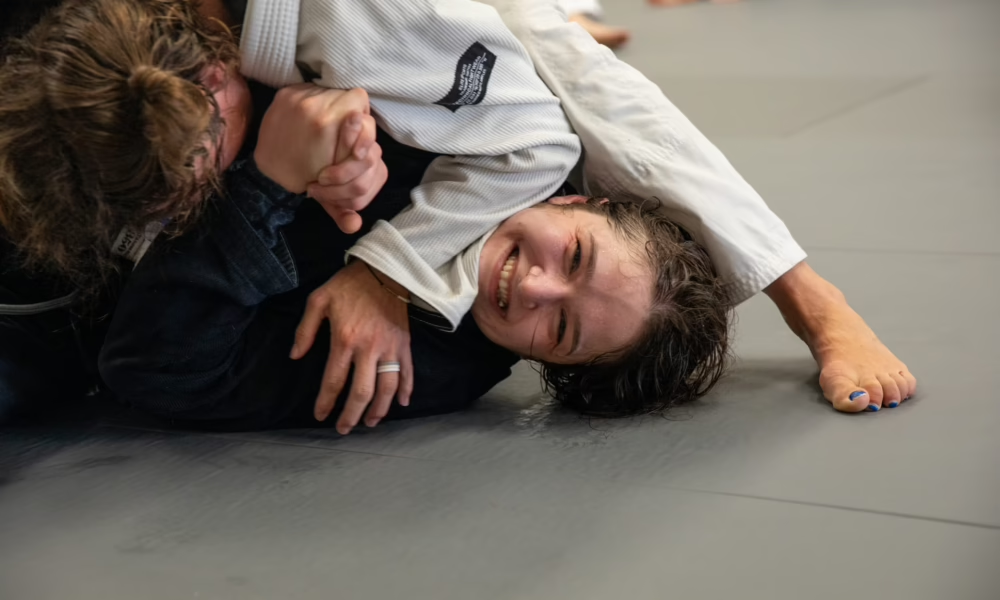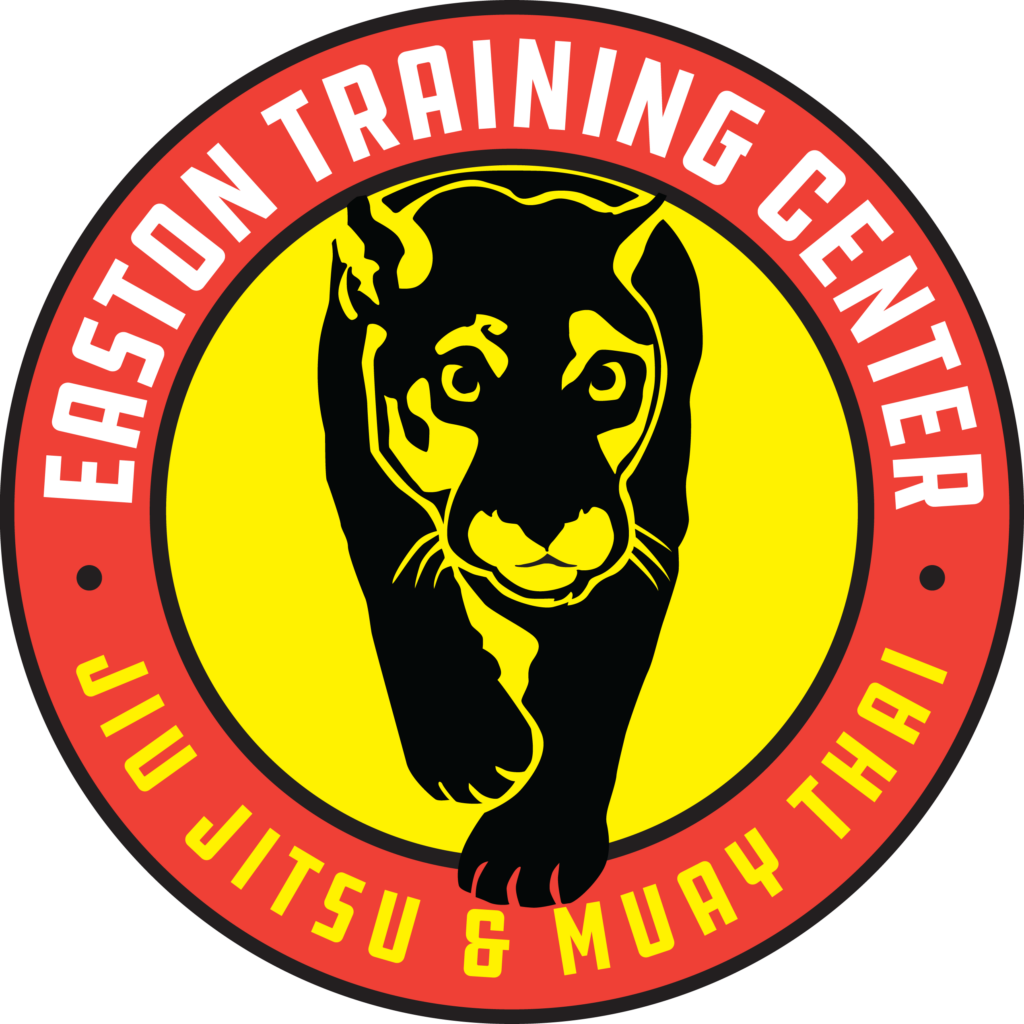Brazilian Jiu Jitsu (BJJ) comprises the single most effective martial art you can learn for self-defense. BJJ doesn’t rely on size and strength. It’s all about leverage and joint manipulation, so a smaller person could easily use BJJ techniques to defeat a much larger and stronger opponent who doesn’t train BJJ.
The History of Jiu Jitsu
This is exactly what it was designed for from the very beginning, when the Gracie family in Brazil took Japanese Jujutsu and adapted it to fit their fighting style and needs.
The early 1900’s in Brazil brought an influx of Japanese immigrants. Some of those Japanese immigrants were athletes and fighters, having trained in the Japanese art of Jujutsu – including prize fighter Mitsuyo Maeda.
Carlos Gracie was an athlete, and he and his family began to train with Mitsuyo. Helio, Carlos’s younger brother, also wanted to train. Being of smaller build and physically weaker than his brothers, however, he had a tough time incorporating some of the traditional Japanese techniques.
That didn’t stop him. Helio began to modify techniques to suit his own needs. By focusing on leverage, joint manipulation and control, chokes and submissions, Helio further developed the ground element of the art to help a smaller person take on a larger opponent. Thanks to Helio, Jujutsu began to gradually transform into what we now know as Brazilian Jiu Jitsu.
Real-world fights often end up on the ground, so training in a martial art that focuses exclusively on ground combat is both practical and prudent. If your primary interest is learning to compete in mixed martial arts, you might know that BJJ makes up a significant part of MMA.
[Starting BJJ: Training Methods For Beginners]
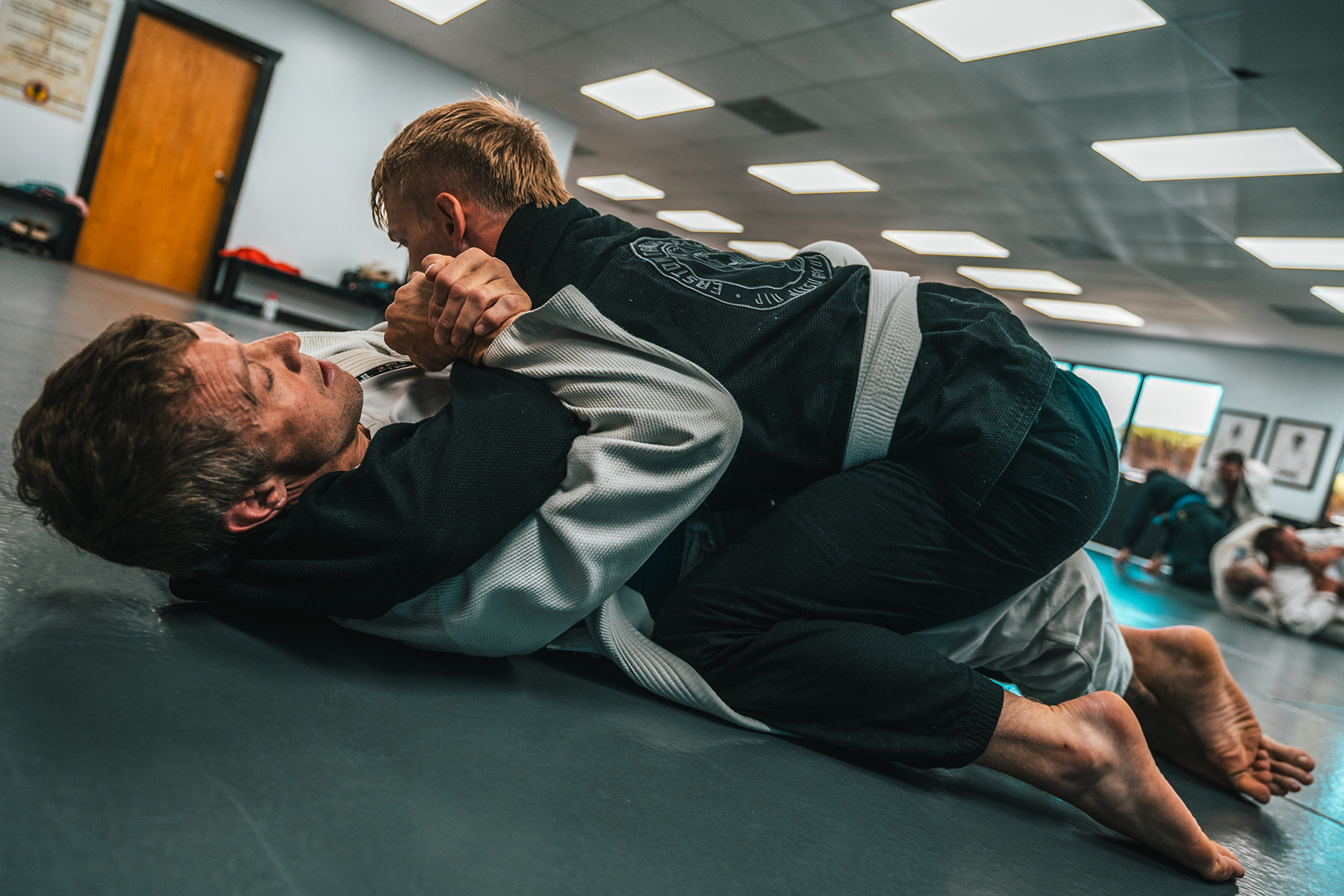
BJJ in Real Life
In Jiu Jitsu, you’ll learn self-defense techniques for real life situations. From there, you’ll start to build your own game in live training, or Randori. In our advanced classes, you’ll learn the finer points of sport Jiu-Jitsu from the best instructors in Colorado.
As BJJ continues to sweep the nation in popularity over the last decade, more and more athletes, entrepreneurs and thought leaders choose to devote hours of their lives to the practice.
When Amal Easton first brought Jiu Jitsu to Colorado after training with the Gracie family in Brazil, the sport had virtually no presence in the United States. Today, countless people from all walks of life benefit from the physical and mental endurance that the grappling sport offers.
The grappling sport requires both flexibility and endurance and gets you into peak physical condition. However, it also facilitates a great deal of community, and many people in all industries seek it out for physical activity and healthy social engagement.
From Joe Rogan and former Navy Seal Commander and podcaster Jocko Willink, to tech execs like Mark Zuckerberg and Elon Musk, a common thread all of these successful entrepreneurs have in common is that they practice Brazilian Jiu Jitsu.
Computer scientist and artificial intelligence researcher Lex Fridman of the Lex Fridman Podcast holds a black belt in Jiu Jitsu and credits the art with helping him achieve professional and academic success.
[Weaponized Nerds: We Need Both Brain And Brawn]
Jiu Jitsu Mindset
Something as consistent as Jiu Jitsu in our everyday lives can also grant us a certain mental stability. Having someplace to go, at a specific time of day, to focus on bettering ourselves in an environment we can control gives a renewed sense of purpose.
However, as you learn new ways to move your body through the lens of self defense, you will also learn to build an unbreakable spirit through the way you deal with discomfort and embrace the challenge.
Jeremy Mast writes in his article Black Belt Advice for BJJ White Belts, “If you’re new to Brazilian Jiu-Jitsu, you may have found yourself bombarded with two torrential streams of information.”
One encompasses all the physical and technical aspects — your basic hip escapes, bridges, framing, etc. Alongside all the technical learning, you will likely also have someone in your ear constantly giving you advice about what to do, what not to do, how to think, and so forth.
This advice-giving will come from everywhere and everyone. You’ll get advice from people who have two decades of training behind them, and you’ll get advice from training partners that started three weeks before you. It can all be helpful, but can also be a bit much.
Often, in a close-contact sport, the discomfort can stem from not being used to the uncomfortable positions we find ourselves in, and the physical weight of your partner bearing down on you. As you improve your skills and physical fitness, you’ll find this discomfort becoming smaller and smaller.
You will also find the mental discomfort begins to ease as you learn to trust your body and your partners. Be patient with yourself. The art has an entire vocabulary of movements, systems and techniques that take years — decades even — to master.
If you can drop your ego and embrace a mindset of humility and curiosity, you’ll have no problem falling into the flow of BJJ. Every black belt is a white belt that didn’t stop showing up.
Health Benefits of Jiu Jitsu
Highly technical sports like Brazilian Jiu Jitsu can have just as much of an impact on a healthy adult lifestyle as more traditional workouts. Just like any other sport, you’ll have immediate results from a single session, as well as the long term benefits from working on the mats over time.
Immediately you’ll get a rush of endorphins after a class. Getting a session in can also make the body more receptive to sleep at the end of the day, which leads to a better night of sleep, and subsequently, a better morning.
The more advanced benefits to Jiu Jitsu, you’ll see over time. At the heart of it, Jiu Jitsu is a body weight exercise, a type of workout with a history of great benefits, including a reduced likelihood of casual injury. People who are used to moving their own weight around (and maybe someone else’s at times) tend to have a lower injury rate on a day-to-day basis.
Microtears created during class repair themselves and make muscles stronger. The bruising that we would see after the first few classes gradually stops showing up as easily, as our bodies get used to getting beat up. As for cardiovascular health – you’ll notice that barely perceptible increase in your endurance until one day you finish up and realize you could have gone on longer.
Recovery for Jiu Jitsu
While Jiu Jitsu inherently provides many health benefits, it’s also important that you maintain that health on your own through mindful recovery habits and intentional diet.
We spend a lot of time using our bodies in Jiu Jitsu. Whether your fitness goals include going pro, competing or getting a good workout in, you want to make sure you’re taking the proper time to reset our bodies between each training session.
Recovery can look like anything from integrating yoga and stretching into your routine to taking breaks or doing more low-impact activities like swimming to supplement your training. You can also invest your time into treatment like saunas, cold showers, dry needle work for pain reduction, and massage.
Specific mobilizations and stretches can help prevent a lot of the overuse injuries that result from martial arts, or any sort of grappling sport where your muscles are crunched up or compressed. Engaging with stretching on multiple levels will help you train longer, feel better and avoid injury!
You never want to go into Jiu Jitsu cold. This means that some preliminary movement should precede activity, and this is where stretching often comes in.
However, it’s important to note that not all stretching makes a good warmup. In the athletic world, there’s two kinds of stretching: dynamic stretching and static stretching.
Dynamic stretching represents a form of stretching that incorporates movement. Walking toe-touches, egg rolls with your chin and knees tucked, and leg swings against a wall all constitute dynamic stretching. These movements create openness in a more gentle way through repetition, allowing you to wake up your muscles and expand flexibility in a charged and useful way.
Static stretching, the act of holding a pose for an extended timeframe (i.e., two minus), comes to mind most often when we talk about stretching. This sort of stretching is ideal after a hard workout or a long session of training, allowing your body to sink into recovery mode through breathwork and an engaged stillness.
Matthew J. Smith, Easton Blue Belt and owner of Revo Physiotherapy and Sports Performance, a Boulder-based physical therapy clinic, shares some tips for Jiu Jitsu and Muay Thai post-class stretches. Matt talks about the importance of stretching the hips and the thoracic spine – two areas which frequently take the brunt of our training. He also gives us four stretches to try; make sure to hold each one for one to two minutes!
If you’re training hard, you need to make sure to balance it out with proper fuel – stock up on healthy carbs beforehand to help burn and protein afterwards, and remember to hydrate! Different types of fuel work differently for everyone, so finding what works best for you may take a little time and require listening to your body.
Alternatively, fasting can also benefit your training. Make sure you do some research before adding this into your routine so that you can plan accordingly and get the best out of your efforts.
[Training Hard? 6 Ways to Recover]
Nutrition for Jiu Jitsu
When training a high-intensity sport like Jiu Jitsu, it’s essential to consider hydration — including pre, post and during workouts. Hydration isn’t just about quenching your thirst; it’s about replacing the water and electrolytes your body loses during rigorous training.
Try to drink at least ½ oz of water per pound of bodyweight. Too much water will bog you down, but too little will hurt your performance. Experiencing dehydration can hinder performance and recovery, making all your hard work less effective.
After training, make sure you replace the water you’ve lost. You can also supplement with Electrolytes! Electrolytes serve vital functions in athletic performance, so make sure you’re replacing them with sports drinks like Liquid IV, Gatorade, mixes like LMNT or Nuun tablets, or even Pedialyte. All contain valuable electrolytes and simple carbohydrates to replenish your energy.
[The Power of Hydration in Sports and Fitness]
It’s also crucial to fuel your body with the right amount of protein before and after a grueling training session. Protein helps repair and build your muscles, making it a key component in recovery.
Ensure you’re consuming high-quality protein sources, such as lean meats, fish or plant-based proteins. A high quality protein powder can also be very effective here. Timing and quantity is important – aim to consume your protein meal 2-3 hours before your workout to avoid any gastrointestinal distress, and look to consume about 1g of protein per lb of bodyweight every day.
You can also tap into supplements like Creatine, Rhodiola Rosea and Magnesium for your recovery potential — read more about how to integrate these here!
[Kick the Sugar, Optimize Your Training Fuel and Feel Better]
How to Tie Your BJJ Belt
At the top of the class and after rolling on the mats, your coach will remind you to straighten your gi and retie your belt each time you line up. The practice roots in respect as well as practicality, but often the unique method for tying the thick Jiu Jitsu belt can trip us up.
Fortunately, senior students and coaches are always willing to help. Dedicate a few minutes now to learn this humble but important skill so that you can stay focused on what matters: training.
Gi vs No Gi
The gi is the traditional uniform that you wear in Jiu Jitsu. It looks like pajamas but thicker, with pants that have a drawstring and an open-faced long-sleeved jacket that you belt shut. The Jiu Jitsu gi is a heavier weight and denser material than a Karate gi, and with longer sleeves than a Judo gi.
In the gi, our fundamentals program teaches the essentials of offense and defense from the foundational positions. The dense material of the Jiu Jitsu gi allows for repetitive, high-impact movements without tearing.
No gi? No problem. While you do have to attain a certain belt level to join Easton’s No Gi classes, No Gi can offer a new system through which you can further explore the art of Jiu Jitsu.
While you need a gi to learn the basics of grips to control and direct your opponent, No Gi requires that knowledge to shift to utilizing other modes of limb control.

Rather than using the gi’s lapels, sleeves and pants to grip, you’ll find ways to scoop under legs, elbows and shoulders when the gi comes off. No Gi uniform consists of rashguards, spats and shorts made of stretchy material so you can take advantage of flexibility.
It’s important to keep all your gear clean – especially when training in close contact with others, but while no gi clothes can just get tossed in the wash, gis can feel trickier to care for.
Follow our instructions here to learn How To Properly Care For Your BJJ Gi.
Basic positions + fundamental movements
Since much of BJJ happens on the ground, many of the basic positions and fundamental movements of the sport revolve around either taking control from the ground, or getting your partner to the ground from standing.
From an offensive position, this means you need to focus on destabilizing your opponent enough to get them off their feet through takedowns that look like sweeps and throws. You always want to maintain some form of contact for control, so when they go down you can immediately apply body pressure to avoid escape or hold onto a limb that will keep them trapped.
Trapping a limb means putting it into a position that doesn’t allow for natural movement, focusing on major joints such as elbows, knees, wrists and ankles. From there, you can continue to move into more controlling positions, such as sitting completely on top of them in something called mount, or taking their back – a strong position because it allows you to use all four limbs to attach to and control your opponent.
From the defense, most basic positions rely on your ability to maintain guard – using your legs to form distance between yourself and your opponent from the ground (open guard) so that they can’t pass and apply pressure to your belly. You can also use a closed guard (wrapping your legs around your opponent) to gain control from the bottom and buy yourself some time to trap a limb from that position.
Some of the most fundamental movements in BJJ come down to the ability to change levels and create shapes that will either prevent an attack on a limb or get you out. For example, shrimping and bridging are two things you’ll learn that use your own body leverage to create space and escape.Shrimping creates space horizontally for you to scoot out from under your opponent, and bridging creates space vertically as you lift your hips and give yourself space to shrimp out. Changing levels helps you move fluidly between standing and ground positions so that you can meet your opponent wherever they are, or catch them off guard by taking one or both knees out from under them.
Basic positions
- Positions: Closed Guard, Half Guard, Side Control, Mount and Back Mount
Fundamental movements
- Takedowns, Sweeps, Submissions, and Guard Retention
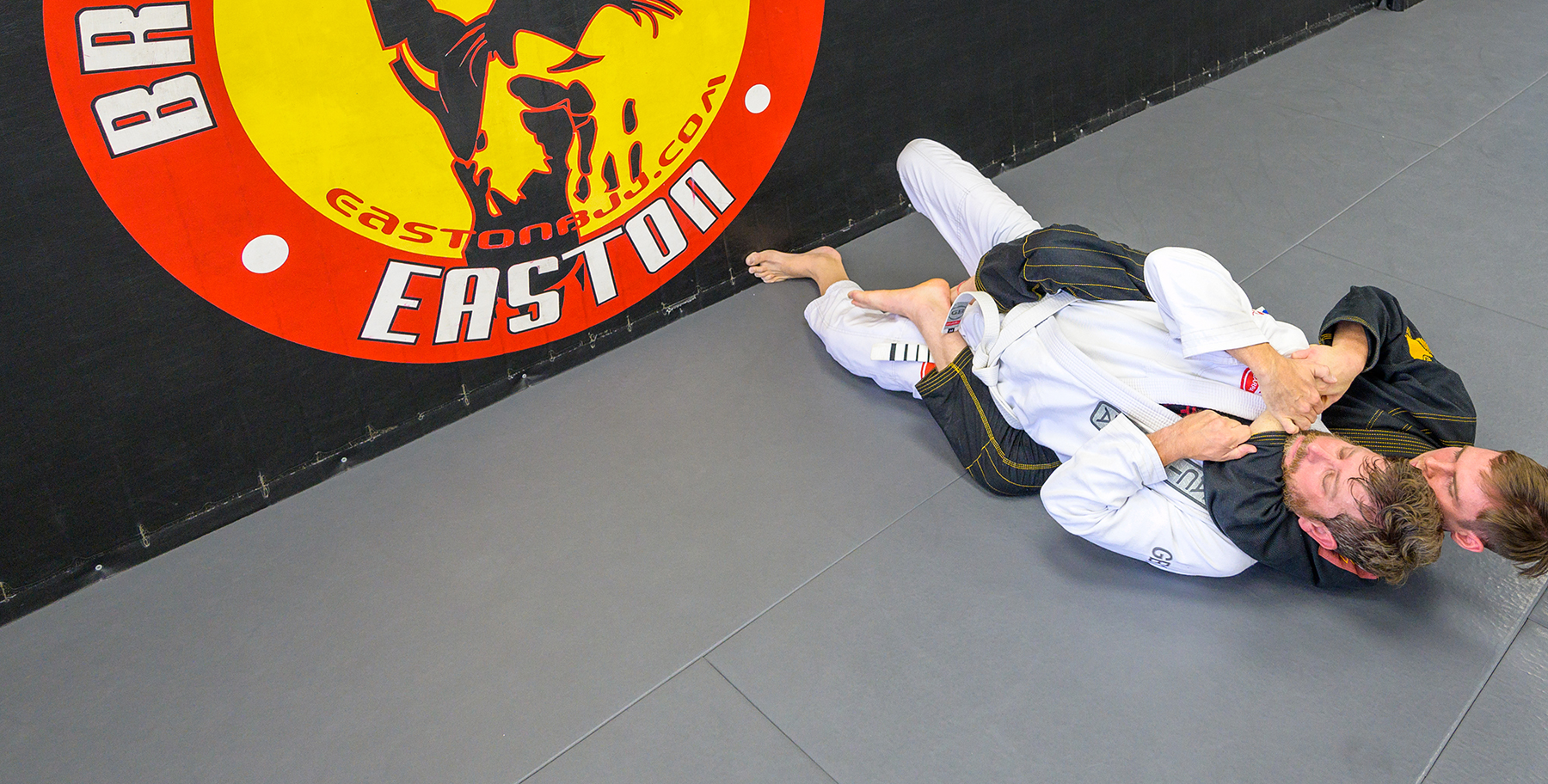
How to be a good training partner
Martial art isn’t just about winning or how quickly we tap our opponent; it’s also about being a good training partner. Partner training is an essential part of Jiu Jitsu, and as much as training partners play a big part in how we learn and perform, our ability to be a good partner impacts the quality of training our partners get.
While we won’t always have the same experience level as our training partner, if we embrace the differences, people on both sides can get something positive out of the experience. Whether you’re the advanced one helping a beginner or the novice learning from more experienced partners, differences can facilitate camaraderie, communication and growth.
Giving our partner the right amount of resistance, especially when drilling, is critical. Good resistance gives them an idea of how the technique will work in a live setting, but giving too much resistance can hamper their ability to learn the technique and get enough reps in to commit it to memory. Similarly, giving too little resistance, like flopping over before a sweep has even happened, does nothing to help our partner to understand where they need to direct their weight and movement, and why.
Keeping yourself and your training partner safe during rounds should always be one of your top priorities. As with applying proper resistance, you also want to make sure to give your partners enough time to tap. This includes going for submissions too quickly, especially joint lock submissions. If you’re going for a heel hook or ankle hook, give your partner time to react and understand the submission you are doing.
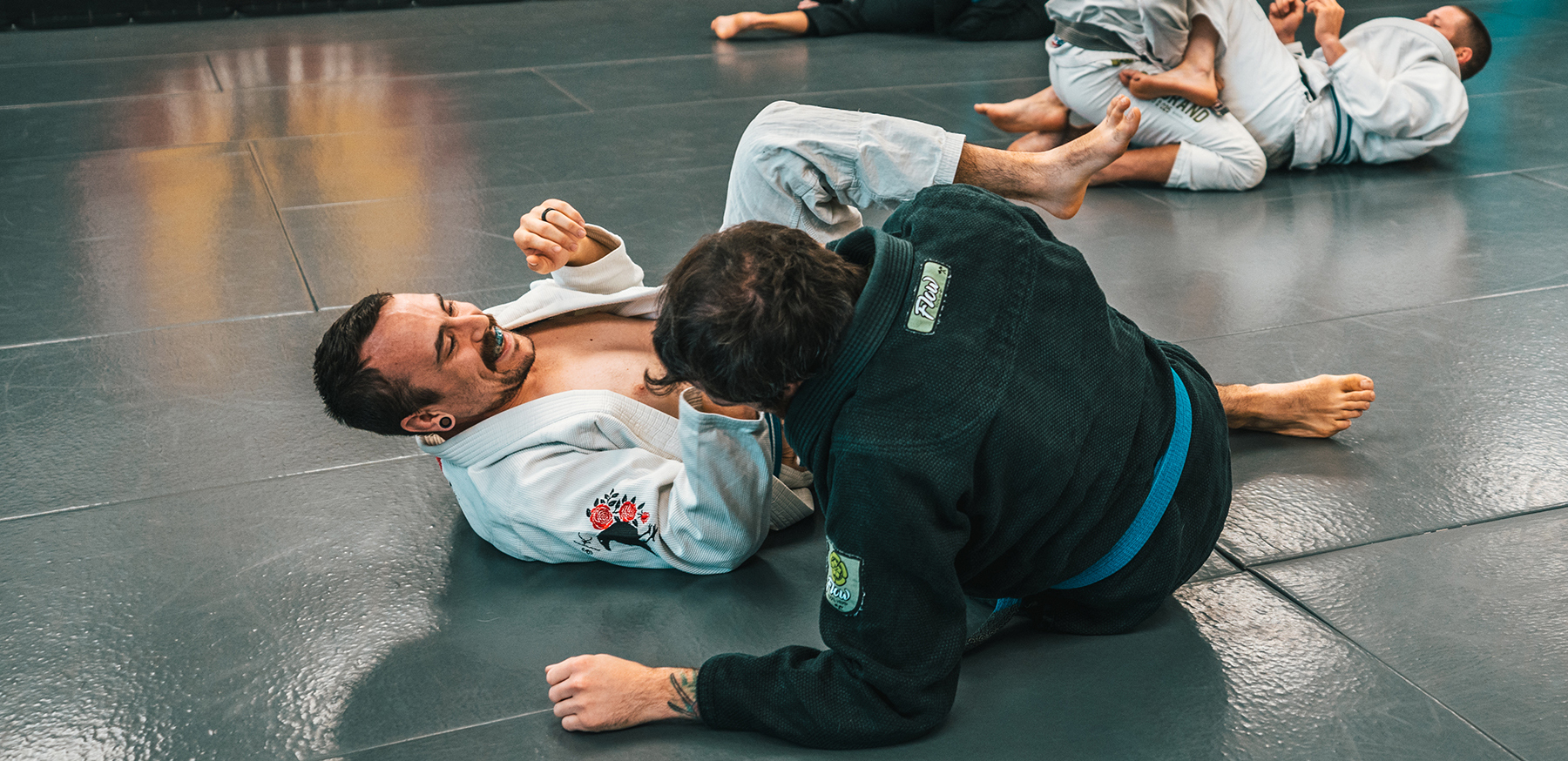
Listen to your partner, pay attention to nonverbal cues like change of pace or breathing, and ask for help when you need it. The biggest part of being a good partner is leaving your ego at the door so that training can benefit everyone involved.
Finally, this should be a given, but in close contact sports, hygiene becomes especially important. No one wants to partner with someone whose rash guards or kimonos smell like last night’s Randori. Wash your gear after every training session. Come to class clean. If you worked out before class, take a shower. Don’t show up already sweaty, and wash your feet before class, especially in the summer when feet are more likely to get dirty wearing flip flops or sandals.
Competing
While not everybody needs to compete in order to enjoy the benefits of Jiu Jitsu, competition makes an excellent way to test your physical abilities and mental resilience.
Competition pushes you to improve your skills, helps develop mental toughness, builds confidence in yourself and your skills, and helps set concrete goals to work towards. It also fosters camaraderie between fellow athletes, teaches the value of sportsmanship and respect no matter the outcome and allows you to analyze and learn from your mistakes.
Competing is a personal choice. While some of us join martial arts with the goal of one day competing, some of us have competitive jobs or other competitive sports, or simply have too many obligations to commit to competing.
Every academy in America is full of recreational players like this — those who play a vital role in helping those teammates that do compete get competition ready. Many of them are also some of the toughest people on the mat, without ever standing on a podium.
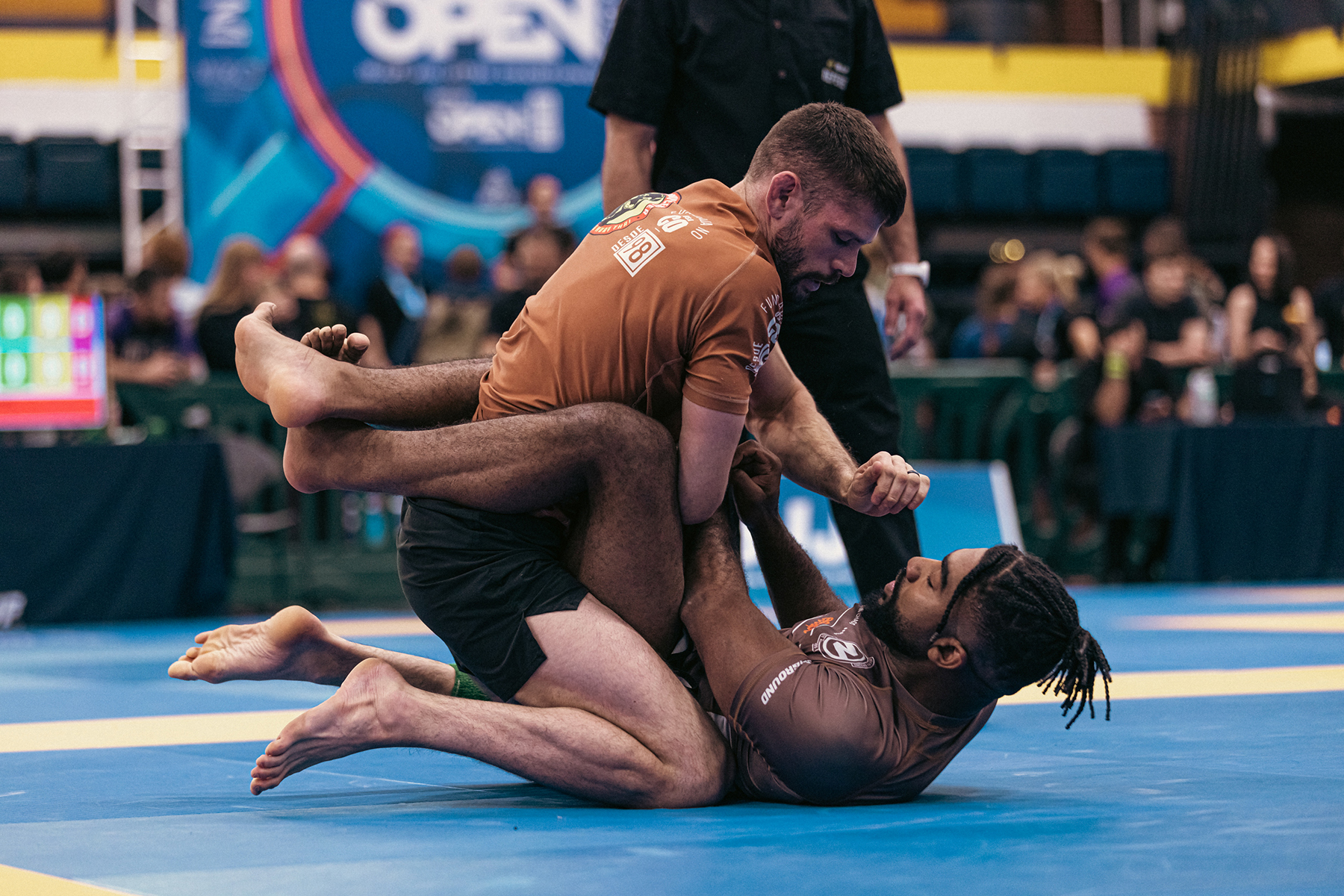
If you choose to compete (which you could do for a myriad of reasons – from gaining competitive experience to testing yourself by doing something that terrifies you) you also choose a lifestyle devoted to high-intensity training as you prepare, mind and body. Many people compete for this reason alone – to continually put themselves through this torrid process which chisels them into the toughest stone.
If you’ve never competed but you want to, the Easton Open is an excellent opportunity to dip your toes in the competition waters. Still, despite its all-Easton family nature, competing can be intimidating – especially when it’s new. To help you combat first-time jitters, we talked to a handful of experienced members and asked for their advice for first-timers.
From staying present and avoiding a huge adrenaline dump on the mat by getting your blood pumping beforehand, to communicating with your coaches and having a game plan, if you prepare and detach yourself from the outcome, your results can surprise you in the best way.
Similarly, kids can work to overcome competition anxiety with your help by emphasizing the experience over the outcome, normalizing feeling nervous, and trying breathing techniques.
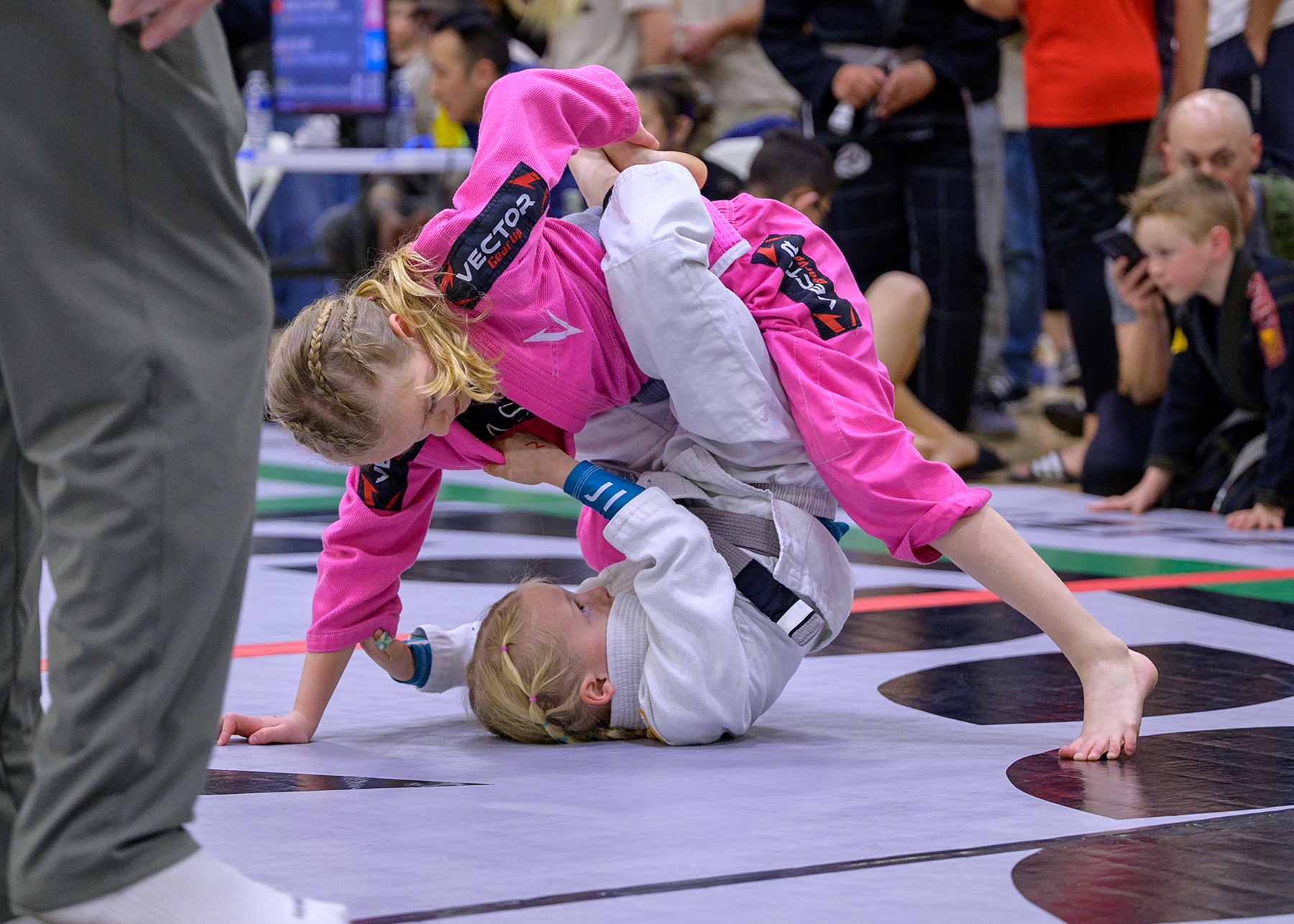
If you have an interest in competing, Easton can provide a path to help you do so!
[What We Mean When We Say “Fight Camp”]
What to expect on your first day
If you’ve never tried Jiu Jitsu before, you might have some hesitation about jumping in. That’s understandable! Martial arts schools can have the unfortunate stigma of coming with hoards of beefy guys who want to tear you apart. Most of the time, that couldn’t be further from the truth.
People from all walks of life gather at the mat, from college students and accountants to farmers, business owners, artists and everyone in between. Each one of these people has also stood exactly where you now stand, at the beginning of your journey.
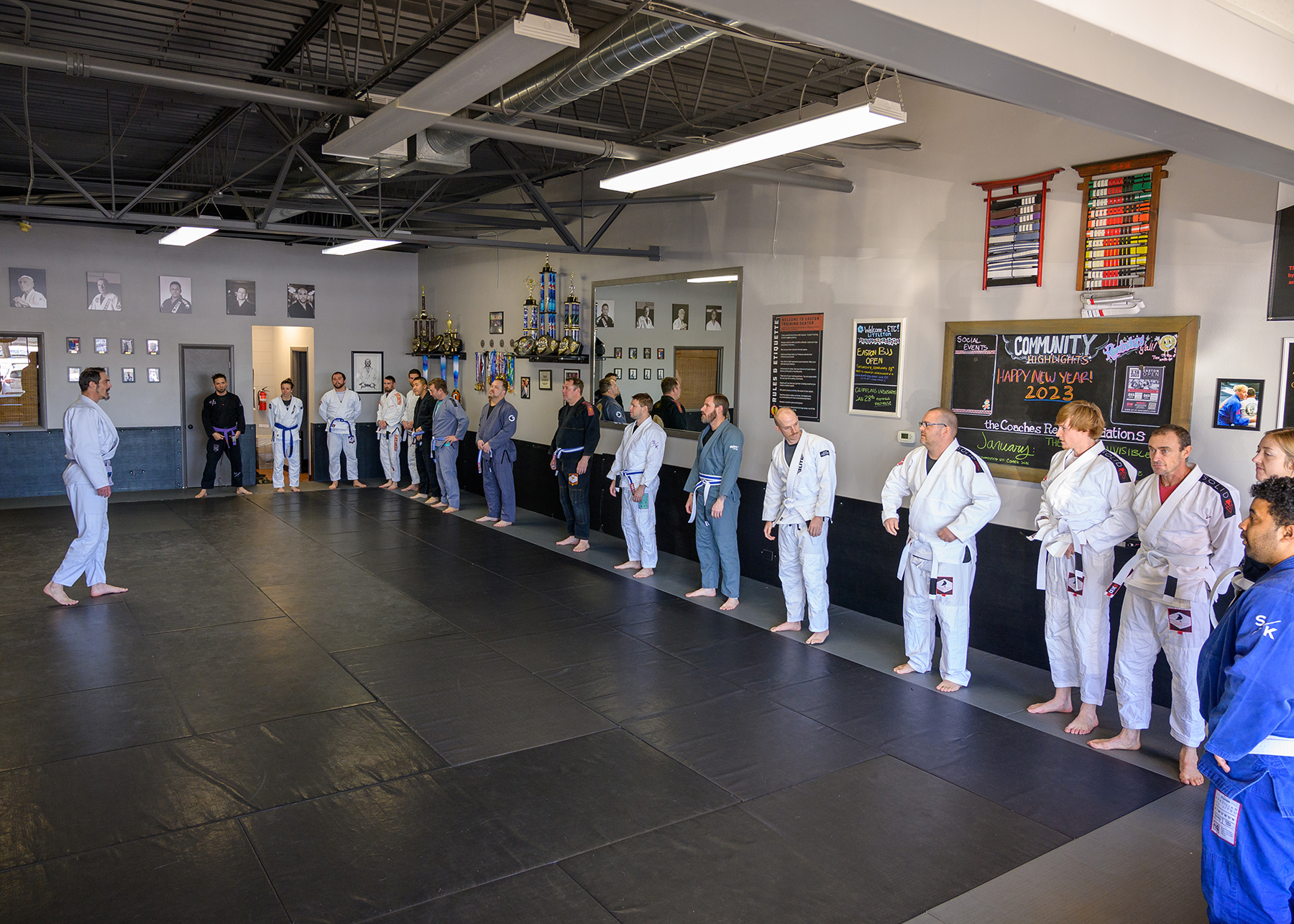
It’s okay to be nervous! Everyone starts somewhere. If a school’s students uphold values like compassion, stewardship and respect, they will hopefully welcome you with open arms (literally) and take the time to catch you up or help coach you through the partnered drills. You’re not cramping anyone’s style because you aren’t sure what you’re doing.
You could also feel a bit out of your element if it’s your first time in a gi – the thick, pajama-like outfit you often see people wear in martial arts. You need a gi to learn the basics of grips to control and direct your opponent, and the dense material of the Jiu Jitsu gi allows for repetitive, high-impact movements without tearing.
Most academies provide one for you to borrow during a trial class, and you want to make sure to wear either shorts, leggings or other athletic clothes beneath it – especially if you have sensitive skin.
To properly put on your gi, step into the legs and pull the strings on each side of your hips out to the side until it cinches tightly around your waist. Tight a solid double knot. Put your gi jacket on, and place the lapel with the tag on it overtop of one without, and scroll up to watch our tutorial for how to tie your belt!
You also won’t learn everything on the first day – in fact you might not learn anything (that’s okay.) You’re not checking something off the list with Jiu Jitsu, you’re rewiring your brain through movement and adding an entire new vocabulary section. Not to mention, that section will only continue to grow as new chapters get added and connections made!
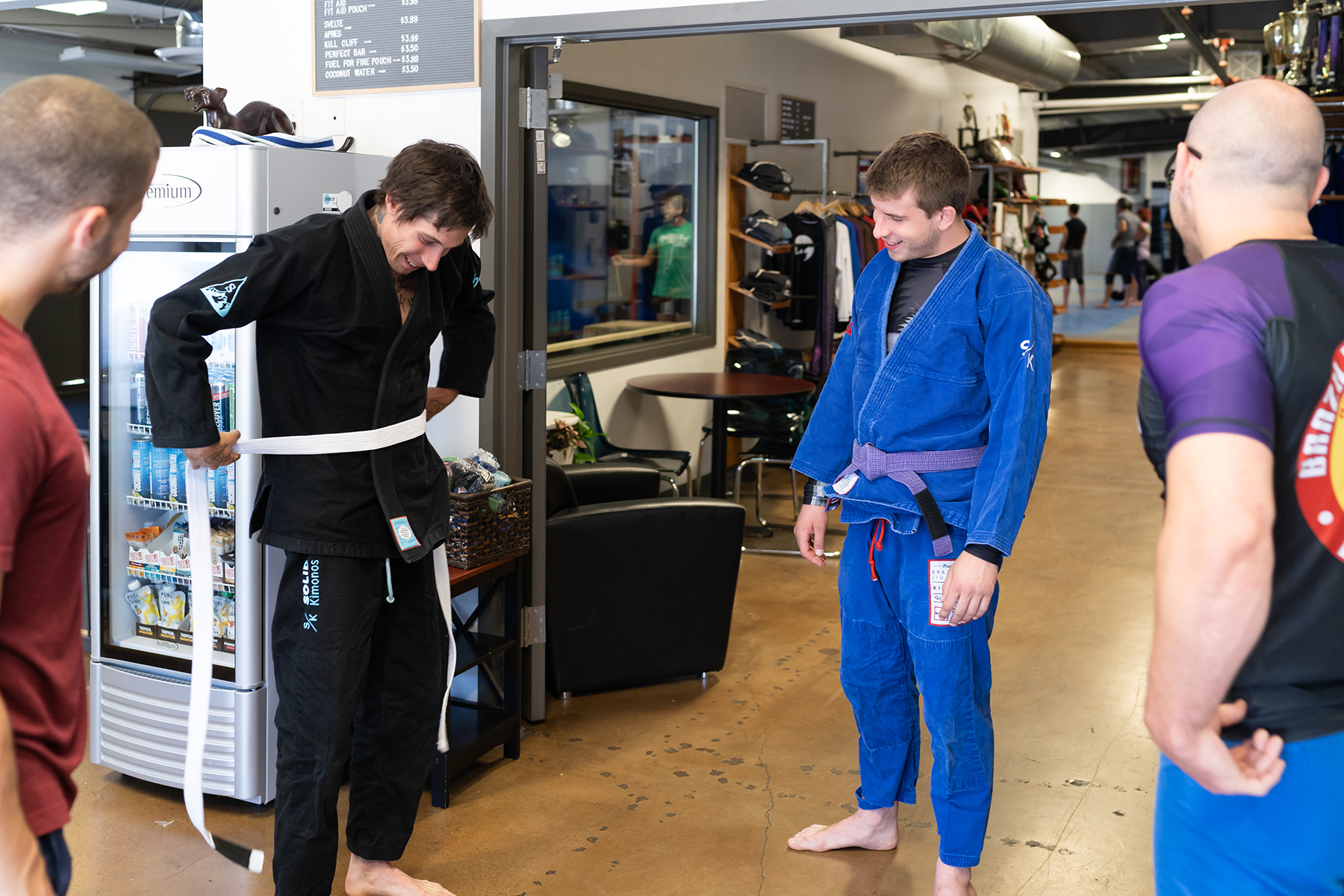
Easton Jiu Jitsu
Easton Training Center’s Brazilian Jiu Jitsu program has classes for students of every level. Whether you’re just starting out or a seasoned brown belt, you’ll find training at our academies to be fun and challenging. Sign up for a free class today!
When you submit your free class request, if you didn’t already specify a date and time, one of our First Impressions Specialists will reach out to do so. They’ll also reach out the day before to confirm, and send you a digital waiver.
If you’ve never done Jiu Jitsu, your first class will be one of our Fundamentals classes. Before class, you get a 30-minute orientation session with a coach where you’ll learn the basics: bowing onto the mat, BJJ history, and common positions and movements.
Then, the fun begins! Everyone lines up on the mat by rank, with the higher belts heading up the right end of the line, and everybody bows in, indicating class has begun. A 10-minute warm up starts class, and then you’ll line up again so your coach can pair you with a partner.
Class will follow a standard format of demonstrating a movement, followed by you and your partner both trying it out while the coach watches your form and technique. It only gets better from here, as you keep coming in and eventually build your game in live training!


